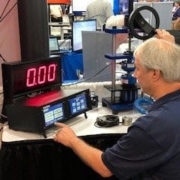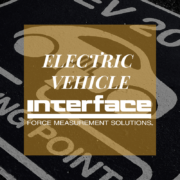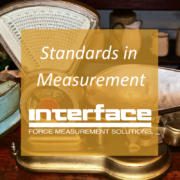Interface Multi-Axis Sensor Market Research
 Recently, Interface commissioned an independent research report on multi-axis sensors demand and use cases. This is a product line that Interface has made significant investments in as more customers require increased load cell functionality and additional source data from their force sensors. The research results confirm that the current demand is in fact expanding worldwide, and the overall users and market size is expected to grow by double digits over the next six years.
Recently, Interface commissioned an independent research report on multi-axis sensors demand and use cases. This is a product line that Interface has made significant investments in as more customers require increased load cell functionality and additional source data from their force sensors. The research results confirm that the current demand is in fact expanding worldwide, and the overall users and market size is expected to grow by double digits over the next six years.
Included below is a brief overview of the state of the multi-axis, as well as an explanation of their overall purpose and why the growth of this type of test and measurement device continues to increase in popularity. We will also continue to break out the results of this research paper, so tune into the InterfaceIQ blog for more multi-axis research content. To learn more about these advanced sensors, view our ForceLeaders webinar Dimensions of Multi-Axis Sensors.
Multi-Axis Sensors Market Overview: The rise of IoT and Industry 4.0 had enabled automation. Machines continue to get smarter and can make split-second decisions using real-time data. Force measurement plays a key role in this transformation. Load cells that are tracking performance and reliability have more insights than ever before. They will continue to grow in their accuracy and capabilities. Load cell and sensor technologies are being used to identify precisely when and where something went wrong on a production line. Load cells will be growing in playing a key role in making production lines more efficient, less reliant on human resources and less costly.
There has been increased need for multi-axis sensors that measure and collect data points on up to six axes. Multi-axis sensors were invented because of the increased requirements for data, both in testing and during actual product use. And this is not slowing down anytime soon. Over the next decade, load cells will continue to keep up with the demand to handle more measurement data points. More sensors will need to be packed into a single device to collect more data with less equipment.
Five Key Take-Aways from Interface’s Multi-Axis Market Research:
- There is a growing requirement for high-performance sensor fusion of multi-axis sensor systems to enable the newly emerging technologies and highly demanding applications.
- Advancements in technology enabling effective components at a lighter and smaller size, such as the swift rise of unmanned vehicles in both the defense and civil applications and the increasing applications based on motion sensing, are the factors driving the multi-axis sensor use cases for testing and to embed into products.
- Digitizing force sensors is another trend changing our product innovators and manufacturer’s designs of machines and equipment through advanced measurement data. Many have strongly invested in more advanced digital electronics to efficiently harvest and store more data. Revolutions in industries and technologies is the dominant trend in force measurement, not to mention the entire manufacturing and engineering industry. Harnessing big data enables product users to remotely monitor assets and increase use of analytics.
- With network-connected force measurement through sensors and instrumentation, OEMs have greater control over testing and product development. Equipment using multi-axis sensors to track performance and reliability provide valuable data on how equipment is performing and predict when machines need maintenance.
- Global machine makers and equipment builders want smaller force sensors they can permanently install in the products. Smaller, wireless sensors are easier and less expensive to install. As more industrial networks are created to share higher-quality data, more and more sensors will be added to these machines.
What: Multi-axis sensors allow the user to measure forces and torques, which occur in more than one spatial direction, as with measurements in x- and y-direction. This allows manufacturers to obtain more data on a wider variety of axes, allowing them to make better design decisions and ultimately improve the product quality. A crucial focus is force measurement in manufacturing, where force transducers are frequently used to determine the force for weight measurement or in the process of production.
Why? Data-driven test and measurement is at the forefront of product development, especially in highly regulated markets like aerospace, automotive, medical, and industrial. One of the most significant applications for multi-axis sensors is seen in manufacturing facilities who want to integrate more autonomy and robotic processes. The goal is to streamline logistics procedures and reduce human errors and workplace accidents. The report also found that there is a great deal interest for last-mile delivery robots, either on the ground, on the sea or drones in the air.
Interface’s Role: Interface multi-axis load cells are ideal for industrial and scientific applications. They are used by engineers and testing labs in various industries and market segments including aerospace, robotics, automotive, advanced manufacturing, for medical devices and research. Our products designed to provide the most comprehensive force and torque data points on advanced machinery. With our industry-leading reliability and accuracy, these multi-axis sensors can provide the data our customers need to ensure performance and safety in their product design.
In fact, their unique capabilities are helping the medical industry optimize prosthetic designs and usability standards with multi-axis sensor testing. The automotive industry is using Interface’s multi-axis products in wind tunnels, and the military is using them to test the center of gravity in aerospace applications.
Here are a few applications use cases that show how multi-axis is advancing products in multiple industries:
Syringe Plunger Force Measurement
Research was conducted independently by Search4Research.








